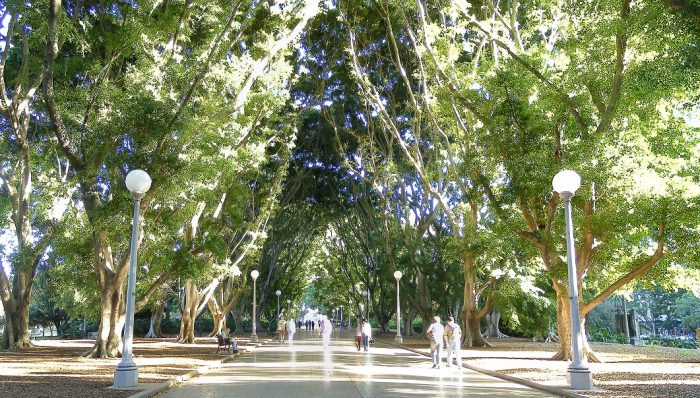
by Daniel Steele
Around the world, cities, researchers, and the broader public have increasingly been turning their attention to public spaces and the important functions they play in civic life. The COVID-19 pandemic turned that attention into an emergency. Essentially every world city joined in on the conversation about our need to revisit the way our public space is allocated and what facilities they offer, as we saw through the exponential rise in park use or the sudden demand for outdoor dining space. The Boston University Initiative on Cities documented the extent to which US cities’ responded to this challenge, ranging from minor and temporary adaptations to transformative and permanent ones.
Elsewhere in the world, Australia’s provincial-level New South Wales Department of Planning, Industry, and Environment used 2020 to test an evaluation tool that could help them better document the quality of the public spaces provided to users. Released as the Great Public Spaces Toolkit, the tool includes a checklist evaluating a wide range of attributes from comfort to safety, character to stewardship, and, as you might have guessed, sound.
Their engagement report summarizes the process of talking with locals and experts from around the world to improve their checklist. Along their way, they spoke with researchers at Sounds in the City. During our conversations, we helped them incorporate the sonic dimension – not only how noise can detract from the public space experience, but how positive sounds can help reinforce the other attributes they are trying to promote in a space.
One of their Key Improvements added to their final version was “Sounds in public space.” In their words, feedback from the public and from Sounds in the City “helped us to address the evaluation of sounds in public space and how sounds can be perceived as pleasant or can compromise people’s activities and experiences.” Practically, in the checklist, this meant the addition of a section on “What can you hear?” next to “What are people doing?” and “What features can you see?”
We enjoy reporting on these simple, yet effective and straightforward policy and governance innovations because we understand the challenges involved in reframing sound and revisiting the noise problem from a positive and public outlook. We are looking forward to hearing about the impacts of including sound on their checklist and we wish them luck for the future of their public spaces!
On our side, stay tuned for updates on our research on the way in which public space use changed during the COVID-19 pandemic in Montréal.